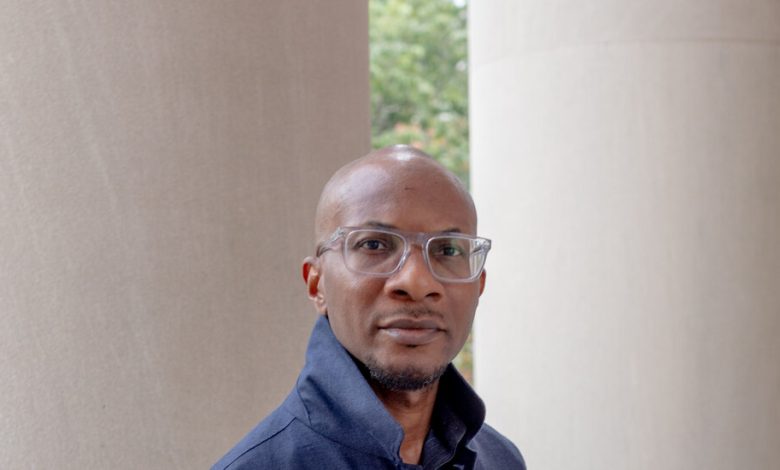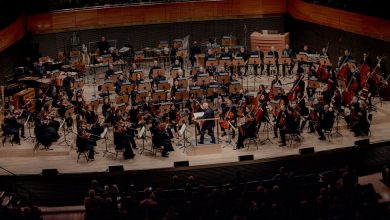Teju Cole Knows His New Novel Resembles Autofiction. Please Don’t Be Tempted.

A strange sense of the calm before the storm pervades Teju Cole’s new novel, “Tremor,” which is attuned to vibrations great and small.
The book is set in the fall of 2019 — what we’d now call “before time” — and follows Tunde, a Nigerian professor of photography at a prestigious Boston college, and his wife, Sadako. Though it eschews plot, the story considers the fault lines of marriage, the ebb and flow of family and friendships, the micro-aggressions and minor conflicts of daily life.
And yet there’s much more just below the surface: suppressed histories of conquest and “cultural obliteration”; premonitions of war with Iran; meditations on death, mortality and illness; memories of past earthquakes, from Japan to Haiti.
The tremors of the book, as Cole pointed out in an interview, are both physical and neurological. “The vulnerability of the world on the seismological, climatic, political level is not unconnected to the vulnerability of our bodies,” said Cole, 48, seated in his office at Harvard, where he is a professor of creative writing. “Anything we think is secure could start shaking tomorrow. There can always be a public or private collapse of some sort.”
A dozen years ago, Cole’s novel “Open City” — an elegiac work that followed the musings of a Nigerian American doctor as he wanders Manhattan — was released to overwhelming acclaim, and “Tremor,” which Random House will publish on Tuesday, is his much-anticipated return to fiction. (In 2014, he released “Every Day Is for the Thief” in the United States, a novel which was first published in Nigeria in 2007.)
“For me, this is a book about the texture of life, which includes some people we’ve lost. And yet this is not a mournful book,” Cole said of “Tremor.” “This is a book that’s about awareness, not mournfulness.”
While “Open City” explored traces of New York’s 19th-century history, “Tremor” is set in a New England landscape where “the tremulousness of the past” is felt in deeper ways, Cole said. It is a book of journeys and reflections, punctuated by essayistic asides and ruthless self-questioning: How can we live a moral life? How should we appreciate the art and culture of others?
Readers of Cole’s nonfiction will recognize these quandaries. In the years since “Open City” was published, Cole has established himself as a compelling cultural commentator, training his eye on a variety of subjects: Caravaggio and 17th-century Italian art, the literary inheritance of John Berger, drone warfare, the “white savior industrial complex.” His pieces for The New Yorker and New York Times Magazine, among other outlets, contemplate “the largeness of the world,” as he puts it. He has also published several books of photography, including “Blind Spot” and “Golden Apple of the Sun.”
“I don’t think there is any way of discussing Teju Cole’s aesthetic without putting front and center this idea of his relentless inventiveness,” the writer Amitava Kumar wrote by email. “I have read ‘Open City’ a dozen times and discover new things to like every time, not least because, just like life, the novel surprises you.”
Words used to describe the jazz pianist Thelonious Monk, Kumar said, could equally apply to Cole: “angular, oblique and as fractured as a Cubist painting.”
In conversation, Cole comes across as warm and deeply thoughtful. Before we began our interview, he reached over to clean my glasses. “There, now it’s going to be like a whole new world,” he said, beaming.
Cole calls his new novel “a reiteration of my faith in fiction.” But it didn’t come easily or quickly. After “Open City,” Cole began to conceive of a big work of nonfiction on Lagos, his hometown, in the vein of Suketu Mehta’s book “Maximum City,” about Mumbai. (Cole, who often borrows from his own biography in his books, was born in Kalamazoo, Mich. and raised in Nigeria. He returned to the United States for college, studying medicine before abandoning it for art history and pursuing a writing career.)
But with his latest project, he wondered if he was on the right path.
“Life is about self-recognition,” he said. “Immersive and comprehensive — it turns out that’s not me. I think I had to realize that what I have to offer is something else, closer to the bone and more personal.”
Gradually, the project evolved into fiction. Then the pandemic happened, and the work took on a different urgency. He began writing the novel in earnest during the summer of 2020, trying to recapture “ordinary” time while he could still remember it.
“There was something about that chunk of months, between late 2019 and 2020, that seemed to be particularly vulnerable to loss, to forgetting,” he explained. “And I thought, ‘If I don’t write down some version of this, it will disappear. It will get lost in the Covid and post-Covid world.’”
The writing came haltingly; he sent chapters to his editor, Caitlin McKenna, in “dribs and drabs,” he said.
“I personally loved the ‘dribs and drabs,’” McKenna recalled over email, “which came in the form of audio recordings, and which I listened to on long, mid-lockdown walks. I felt like an early, privileged audience to an important and ambitious book starting to find its shape.”
The result is something of a pastiche, a prismatic approach to Tunde’s inner and outer worlds. One chapter is given over entirely to a clamor of voices from Lagos. Cole wove together overheard and invented monologues to create a series of 25 first-person testimonies.
“Lagos is a city of a thousand stories and you hear that and you imagine more and combine it,” he said. The project became an effort to “let the city write itself in this sort of democratic voice of its inhabitants.”
As Cole writes in “Tremor,” the choreography that keeps Lagos in motion “would be amazing could it be seen in a single encompassing moment. That is not possible in a city which changes faster than it can be described.”
According to the Nigerian writer Emmanuel Iduma, the chapter evokes Lagos in a quintessentially Cole-like way. “In its polyphony, the section on Lagos collects stories only he could have written — large-hearted in their humanity and articulate in their critique, to a degree that each is elevated to something close to a parable,” Iduma wrote by email.
As with “Open City,” readers might wonder just how much of “Tremor” is autofiction, a label Cole shrugs off. He conceded that it’s not an “unjust” way to frame his work, but cautions against taking it literally.
“Autofiction means drawing from your life, but which bits? Because you actually don’t know,” he explained. “There’s so much that is made up, and it’s relentlessly threaded through what is not made up.”
A scene between Tunde and a past lover in Lahaina, Maui, for example, was completely fictional, Cole said. The setting, in the wake of devastating wildfires there in August, seems eerie now. But another part — when a lecturer discussing J.M.W. Turner’s painting “The Slave Ship”experiences temporary blindness — actually happened to Cole, reminding him of his own “radical vulnerability.”
Cole said he wants to challenge readers’ assumptions once again with this book, which reflects his “restlessness with form.” He draws a parallel with the work of jazz musicians who are constantly creating anew.
“That’s what trying to work with unconventional forms feels like: You’re crossing the bridge while you’re constructing the bridge,” he said. “I want people to read my work and think, ‘Wait, I didn’t know that was allowed.’ Any book that is finding its own form is implicitly saying, ‘Well, it’s allowed now.’”




